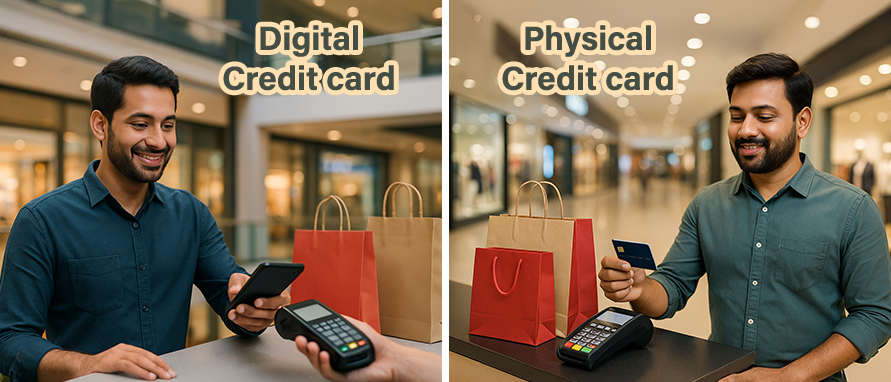As we move into FY 2025-26, both digital and physical credit cards are adapting to meet consumer demands.
Here’s what you can expect from each:
Digital Credit Cards:
With features like two-factor authentication and biometric verification, digital cards offer robust security
Instant access via mobile apps allows for better control over spending limits and transactions
Tailored for seamless online shopping, bill payments, and digital wallet integrations
No need to wait for physical cards, offering immediate access to your credit line
Physical Credit Cards:
Still widely used for face-to-face purchases and ATMs
EMV chips and contactless payment technology ensure secure in-person transactions
Universal acceptance at most merchants and ATMs worldwide
Some prefer having a physical card for peace of mind or specific transactions
Future Enhancements
Both digital and physical cards will integrate advanced authentication methods for added security
More advanced fraud prevention tools will be incorporated into both types of cards
Expect improved mobile apps that offer better control over spending, alerts, and budgeting features






































